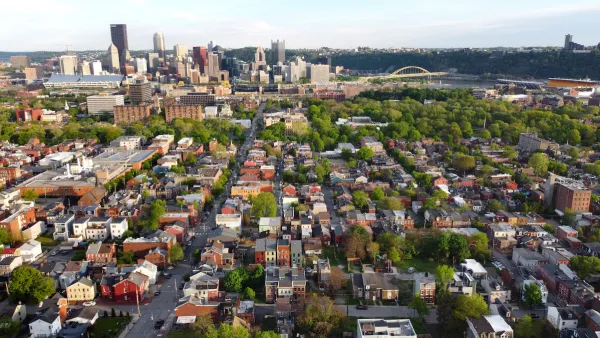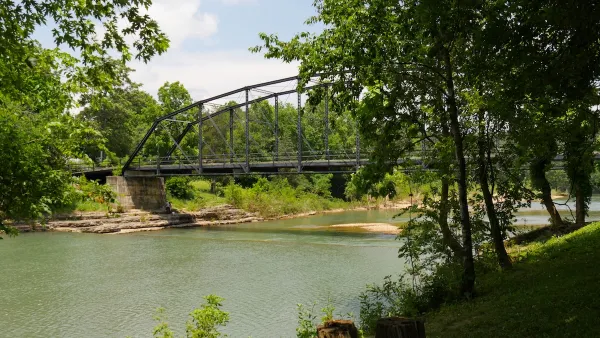Fast Company blogger Michael Cannell says the economic crisis stands to make big winners out of the new urbanists.
"The downturn has accomplished what a generation of designers and planners could not: it has turned back the tide of suburban sprawl. In the wake of the foreclosure crisis many new subdivisions are left half built and more established suburbs face abandonment. Cul-de-sac neighborhoods once filled with the sound of backyard barbecues and playing children are falling silent. Communities like Elk Grove, Calif., and Windy Ridge, N.C., are slowly turning into ghost towns with overgrown lawns, vacant strip malls and squatters camping in empty homes. In Cleveland alone, one of every 13 houses is now vacant, according to an article published Sunday in The New York Times magazine.
The demand for suburban homes may never recover, given the long-term prospects of energy costs for commuting and heating, and the prohibitive inefficiencies of low-density construction. The whole suburban idea was founded on disposable spending and the promise of cheap gas. Without them, it may wither. A study by the Metropolitan Institute at Virginia Tech predicts that by 2025 there will be as many as 22 million unwanted large-lot homes in suburban areas."
Thanks to Neil Takemoto
FULL STORY: Suburbia R.I.P.

National Parks Layoffs Will Cause Communities to Lose Billions
Thousands of essential park workers were laid off this week, just before the busy spring break season.

Retro-silient?: America’s First “Eco-burb,” The Woodlands Turns 50
A master-planned community north of Houston offers lessons on green infrastructure and resilient design, but falls short of its founder’s lofty affordability and walkability goals.

Delivering for America Plan Will Downgrade Mail Service in at Least 49.5 Percent of Zip Codes
Republican and Democrat lawmakers criticize the plan for its disproportionate negative impact on rural communities.

Test News Post 1
This is a summary

Test News Headline 46
Test for the image on the front page.

Balancing Bombs and Butterflies: How the National Guard Protects a Rare Species
The National Guard at Fort Indiantown Gap uses GIS technology and land management strategies to balance military training with conservation efforts, ensuring the survival of the rare eastern regal fritillary butterfly.
Urban Design for Planners 1: Software Tools
This six-course series explores essential urban design concepts using open source software and equips planners with the tools they need to participate fully in the urban design process.
Planning for Universal Design
Learn the tools for implementing Universal Design in planning regulations.
EMC Planning Group, Inc.
Planetizen
Planetizen
Mpact (formerly Rail~Volution)
Great Falls Development Authority, Inc.
HUDs Office of Policy Development and Research
NYU Wagner Graduate School of Public Service





























